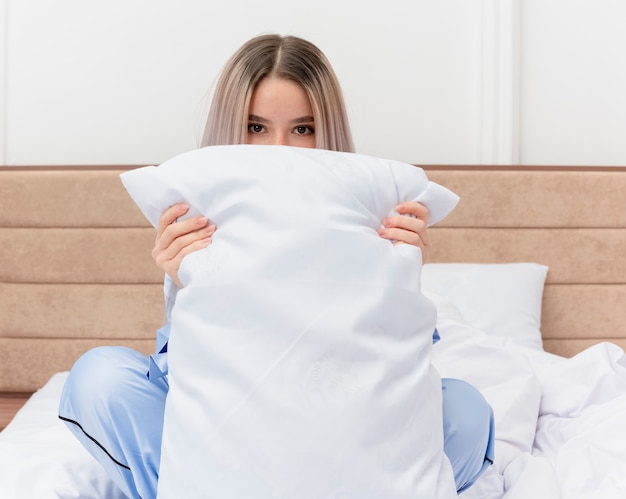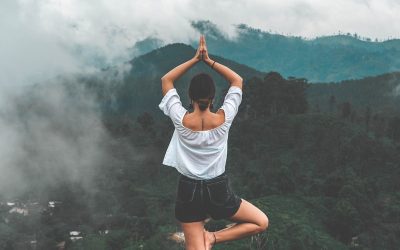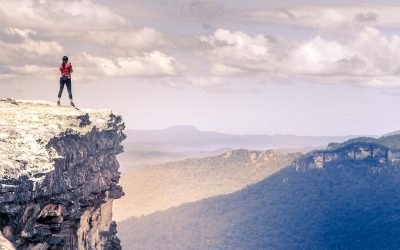What Pillow Marks on Your Face Reveal About Your Skin


What Pillow Marks on Your Face Reveal About Your Skin
Sleeping Beauty had a curse that kept her asleep for a hundred years — but for some of us, just a few hours are enough to wake up with swollen eyes, an aching back, and a face marked by pillow lines. Some people struggle just to fall asleep, never mind worrying about how they look when they wake up (spoiler: probably not like a Hollywood movie star).
But back to the point: what does it mean when you wake up, glance in the mirror, and find your face covered in creases? Are we getting older? Did we sleep too deeply? Or did some mischievous elves work their magic on our skin overnight?
How Can a Pillow Leave Such Deep Marks?
It mostly comes down to uneven pressure on your face while you sleep. When certain areas are compressed against the pillow for hours, your skin can crumple and hold those folds for a while.
Is There Anything We Can Do About It?
Actually, yes.
The material of your pillowcase makes a difference — rougher fabrics are more likely to leave imprints, while smooth materials like silk or satin are gentler on the skin. Your sleeping position matters, too. If you’re a stomach or side sleeper, you’re more prone to pillow marks. (But hey, no one ever died from a few sleep lines.)
That said, you might wonder:
Could Repeated Pillow Compression Damage Our Skin?
Short answer: no serious damage. Longer answer: it could speed up the visible signs of skin aging.
Sleeping Positions and Aging
As we age, our skin naturally loses collagen and elasticity, making it more prone to wrinkles — including those caused by sleeping. Repeatedly pressing the same areas against the pillow can impair blood flow and contribute to the formation of permanent lines over time.
And how quickly those sleep creases fade after waking up can tell you a lot about your skin’s health. If marks stick around longer than they used to, it could be a sign of decreased skin elasticity and slower regeneration. In that case, using a good moisturizer or targeted serums might help.
If you can, training yourself to sleep on your back is a great way to protect your skin. If that’s not realistic, even switching to an ultra-soft, smooth pillowcase — ideally fragrance-free to avoid irritation — can make a real difference.
Supporting Healthy Skin Overall
Consistency is key. Stick to a solid morning and evening skincare routine, use sunscreen daily, choose products that support collagen production, stay hydrated, and drink plenty of water. Your skin will thank you — and you’ll likely see fewer pillow marks in the mirror.
Highlited posts
A New Life in Freedom: Touching Moments of a Former Circus Lion’s First Steps into the Wild
After a lifetime spent behind bars, Will the lion finally set foot on grass for the first time — and his reaction has touched millions. Rescued by an animal welfare group and released into a protected wildlife sanctuary, Will went from apathy to joy in a matter of days. A video capturing his first steps into freedom shows him playfully exploring his new surroundings, basking in sunlight, and rediscovering life itself. His story is a powerful reminder of the healing power of compassion — and the life-changing impact of giving animals the freedom they deserve.
Struggling to Fall Asleep? These 6 Hacks Could Knock You Out in 60 Seconds
A recent survey shows that over half of people experience disrupted sleep, with 57% waking at night and 44% struggling to fall asleep. Long-term, this can impact physical and mental health.
When he cheated on me, I asked what made the other woman better than me.
„I forgave you – but I didn’t forget. And I’m not as naive as you think. The day you were given a second chance, you went back to her. But I’m no longer the girl who’s easy to fool.”
Learn to let go, fight for yourself, and never let anyone treat you like a toy. A lion doesn’t walk the path of a housecat.
A World Traveler’s Confession: 7 Countries He Wouldn’t Return To – And Why
After visiting all 197 recognized countries, travel influencer Drew Binsky opens up about the seven destinations he wouldn’t return to. From safety concerns in Chad to disappointment in Bahrain, his honest insights reveal that not every trip is paradise — and some places are best left off your bucket list.







